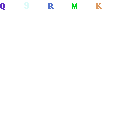
This has led to an increase in Medicare Part D spending in recent years, since Medicare pays 80 percent of enrollees’ total drug costs in the catastrophic phase.

Under changes made by the Bipartisan Budget Act of 2018 (BBA), Part D enrollees’ out-of-pocket costs for brands in the gap will decline from 35 percent of total costs in 2018 to 25 percent in 2019-rather than in 2020-while plans’ share of costs for brands will decrease to 5 percent and the manufacturer discount will increase from 50 percent to 70 percent.Due to provisions in the Affordable Care Act (ACA) to phase out the coverage gap, average out-of-pocket costs for non-LIS Part D enrollees who reach the coverage gap decreased substantially between 20 but have increased somewhat in recent years. In 2016, the most recent year of available data, more than 5 million Part D enrollees without low-income subsidies (LIS) reached the coverage gap, spending $1,569 out of pocket, on average, and receiving an average manufacturer discount of $1,090.This data note presents trends on the Part D coverage gap and discusses recent and proposed changes affecting out-of-pocket costs for Part D enrollees who reach the coverage gap. Subsequent legislative changes are phasing out the coverage gap by modifying the share of total costs paid in the gap by Part D enrollees and plans and requiring drug manufacturers to provide a discount on the price of brand-name drugs in the gap.

The coverage gap was included in the initial design of the Part D drug benefit in the Medicare Modernization Act of 2003 in order to reduce the total 10-year cost of the benefit.

As of 2019, Medicare beneficiaries enrolled in Part D prescription drug plans will no longer be exposed to a coverage gap, sometimes called the “donut hole”, when they fill their brand-name medications.


 0 kommentar(er)
0 kommentar(er)
